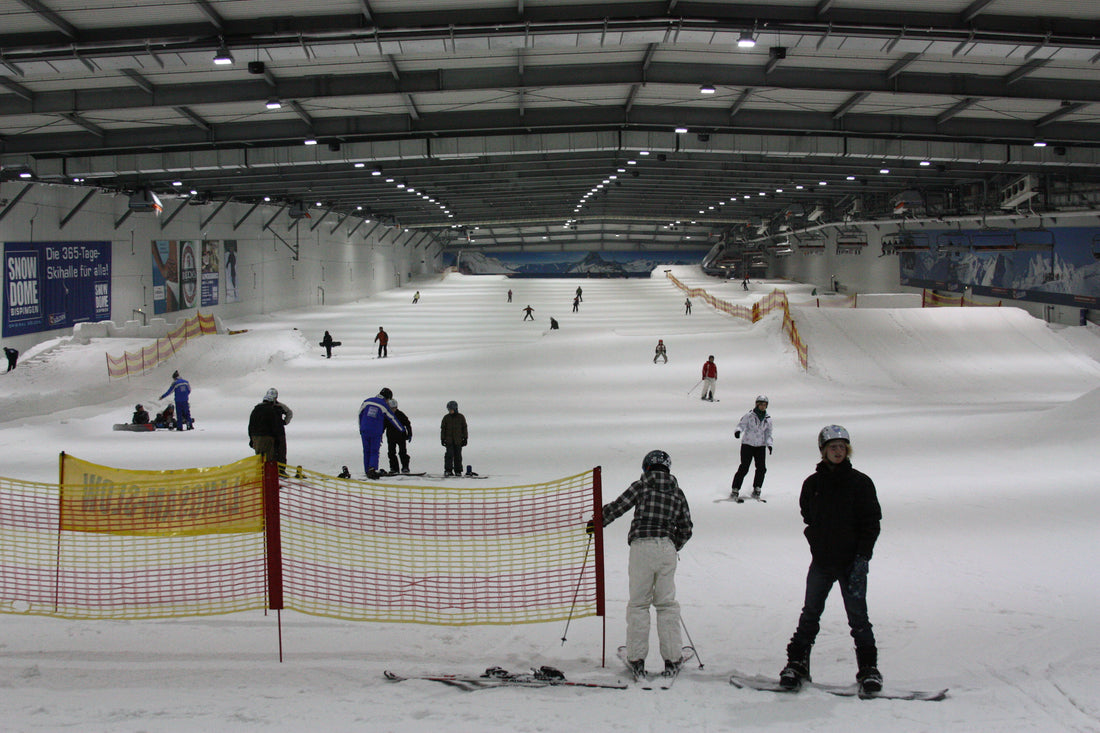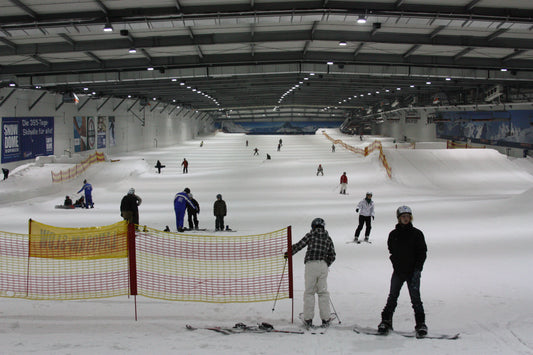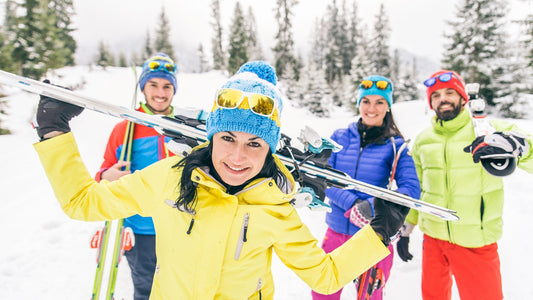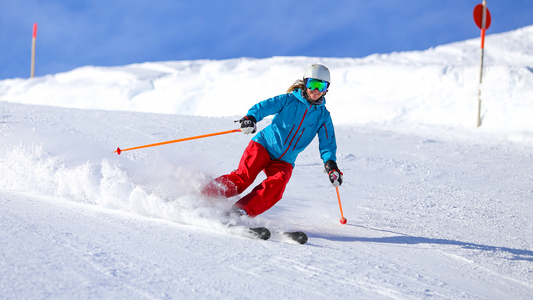As we near the winter season many of us are looking forward to hitting the slopes, but not everyone lives in the mountains and heavy snowfall cannot be relied upon. The solution? Indoor skiing.
Artificial ski slopes, or dry ski slopes as they were known, were where many people had their first experience on skis. These slopes were often small, open to the elements and offered a somewhat realistic experience for first time skiers.
Fast forward to 2023, there are now 121 indoor ski centers worldwide, with real snow and a variety of slopes, fun parks and ski lift systems.
These modern indoor ski centers produce real snow and maintain the slopes in a refrigerated room, recreating the same conditions found in mountains all year round.
How does an indoor ski slope work
Indoor skiing provides the unique experience of skiing year-round, regardless of outdoor weather conditions. At the heart of an indoor ski slope is a sophisticated engineering design that replicates the conditions one would find on outdoor slopes, within a controlled environment.
The construction begins with creating an inclined slope that mirrors the gradient found in natural skiing environments. This framework is then covered with a surface material designed to mimic the properties of snow. One common material used is Neveplast, a synthetic material that offers glide similar to snow when lubricated with water. Another approach involves producing artificial snow through snow cannons which spray a mixture of water and air to create snow-like conditions, closely resembling the experience of skiing on real snow.
Temperature control is crucial within the facility to maintain the snow's quality and ensure it doesn't melt. The ambient temperature is kept just below freezing, typically between -2°C and -6°C (28°F and 21°F), through an extensive cooling system installed beneath the slope and throughout the building.
Lift systems such as magic carpets or chairlifts transport skiers back to the top of the slope, allowing for continuous runs. Advanced slopes may also include features like jumps, rails, and slalom courses to cater to varying skill levels and preferences.
Lighting plays a significant role in creating a realistic environment, with systems designed to simulate daylight conditions. Additionally, safety measures are implemented rigorously, including padding around poles and edges, alongside regular maintenance checks on equipment and surface conditions.
How do indoor ski resorts make snow
Indoor ski resorts have revolutionized the skiing experience, offering enthusiasts the chance to enjoy their favorite sport year-round, irrespective of outdoor weather conditions. The cornerstone of these facilities is their ability to produce snow, a process that closely mimics natural snowfall but within a controlled environment. The creation of indoor snow involves a sophisticated interplay of temperature control and water atomization, achieved through state-of-the-art technology.
The process begins with the cooling of the air inside the facility to a temperature that can sustain snow without it melting, typically between -2 to -6 degrees Celsius. This is crucial because maintaining a constant cold temperature ensures the longevity and quality of the snow. Next, water is atomized by being forced through specially designed nozzles at high pressure. These nozzles disperse water droplets into the cold air where they freeze and fall as snow.
This artificially created snow must have properties similar to natural snow to provide an authentic skiing experience. Therefore, controlling the size and shape of the snowflakes is essential, achieved by adjusting the water pressure and air temperature. The indoor snowmaking process is energy-intensive, requiring efficient insulation and refrigeration systems to maintain the cold environment necessary for snow production.
Furthermore, environmental considerations are paramount in the operation of indoor ski resorts. Many facilities invest in energy recovery systems to minimize waste and utilize recycled water for snowmaking, striving to balance recreational opportunities with sustainability efforts.
How steep is a slope at the snow dome.
The gradient of pists inside a snow dome can significantly influence the skiing experience, affecting everything from speed control to turning techniques.
The steepness of a snow dome is typically less than that of outdoor mountain slopes. This is largely due to space constraints and safety considerations within an enclosed environment. However, modern engineering and design advancements have allowed for the creation of more varied and challenging gradients within these indoor facilities. Generally, the slope gradient in a snow dome can range from gentle inclines suitable for beginners to more challenging pitches that cater to intermediate and advanced skiers.
Some indoor skiing facilities boast slopes with gradients approaching 20%, providing a substantial challenge even for experienced skiers. However, most indoor slopes maintain an average gradient of between 10% to 15%, striking a balance between accessibility for beginners and enjoyment for more seasoned participants. The design often includes a mix of gradients within the same facility, offering different sections for varying skill levels.
It's important to note that while the steepness is a crucial aspect, the overall experience also depends on other factors such as the quality of artificial snow, temperature control, and slope length. Indoor skiing provides a controlled environment where both newcomers and avid skiers can practice and improve their skills irrespective of outdoor conditions.

Why skiing indoor?
Indoor ski centers or snowdomes, allow the beginner skier to have their first lessons on real snow, a lot closer to home. All equipment can be rented on site and there is no need to check the weather forecast as conditions are kept at a constant. Lessons can be booked for the whole family and for every standard, so the snowdome is the perfect place to try skis or snowboarding for the first time, or to blow off the cobwebs before a ski holiday.
I have had many students who went practicing before in an indoor skiing center, often in the UK. I found that it was always beneficial as they arrived with a solid base to start with, and that made a big difference especially in the first 2 or 3 days of skiing on the mountains.
For more advanced skiers they can help you stay 'ski fit' and practice technique during the summer or before a ski holiday.
Are indoor skiing centers expensive?
A snow centre is making skiing available to a much broader segment of people.
Lessons and ski lift passes vary in cost between ski centres and can be expensive, around 90 euro for a two hour lesson with equipment included. Many indoor ski centres offer a 'learn to ski day' package or beginners courses. If you consider how much it costs to go skiing, paying for a beginners course in a snowdome is a good investment, as it means when you arrive in the ski resort, you have already learnt the basics and can begin the week progressing on green and blue runs. You can also test out your ski wear and equipment before you travel.
Indoor skiing centers also offer the perfect environment for children to have their first experience of skiing and it gives them a fun environment to play in the snow and gain confidence.
So what's the catch?
There is of course no comparison between skiing indoors to skiing in nature, skiing the same run for two hours indoors can be repetitive and during peak times the ski area can be busy which makes it more difficult to ski. However, there are advantages to skiing indoors. Repeating the same run, under the same conditions makes it easier to practice technique. Practice makes perfect and for the beginner, indoor skiing can provide a safe, consistent environment to ski. Not everyone will live close to an indoor ski center, but a weekend spent in a snowdome may be a good investment to help you prepare for your ski holiday.




